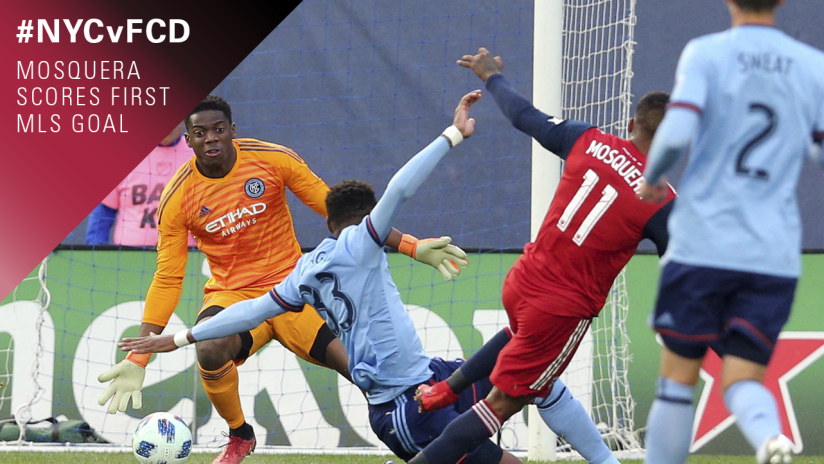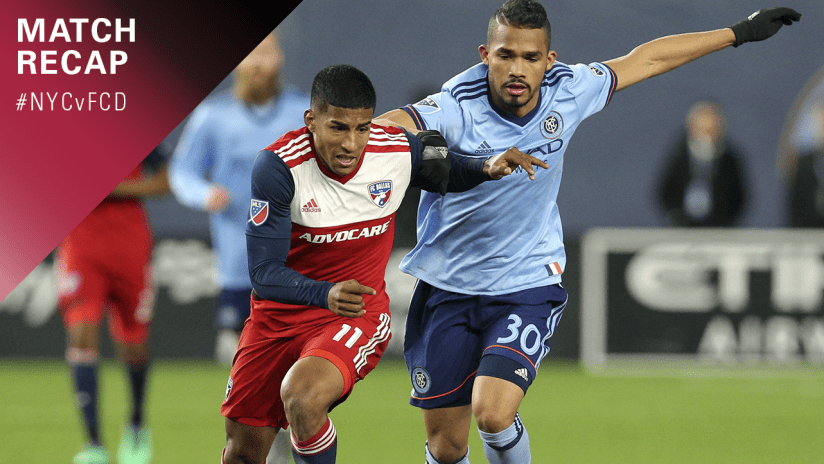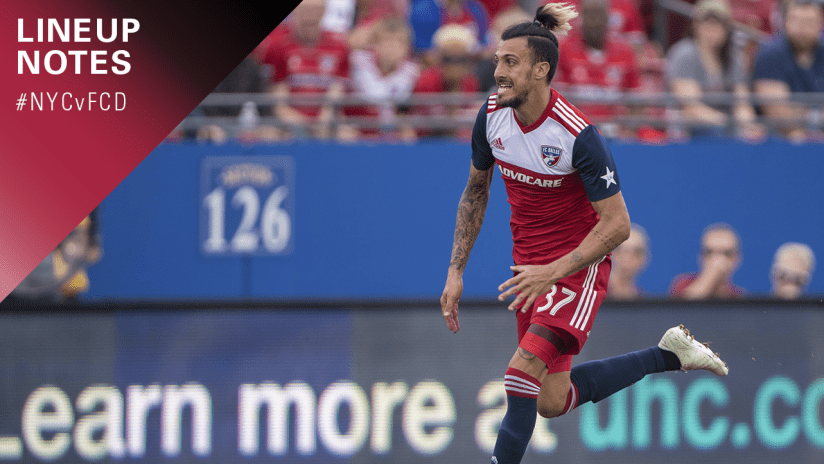NEW YORK - FC Dallas dropped their first match of 2018, but overall didn’t have a poor performance. The few momentary lapses quickly went the other way on NYCFC’s compact field and Dallas paid the price. Here’s what we learned from #NYCvFCD as the team gets set to head west next week.

Mosquera on the Right
In just his third start of the year, Santiago Mosquera looked in his best form to date. He played 90 minutes for his first time as a member of FCD and scored the lone goal with the help of Maxi Urruti in the 10th minute. Just look at his work in creating his own goal, tracking to the middle and forcing an errant pass by Yangel Herrera.
His performance, though, went much further than the goal.
Defensively, Mosquera was a big part of Dallas’ game in winning the ball back and springing counter attacks. Over 90 minutes, he had three interceptions, four recoveries and two tackles. He also led FCD with 70 touches on the night and put three of his four shots on target.
In his first half passing chart, you can see his attempts to spring a striker from deeper in the field rather than his usual deep runs, even though most were to no avail.
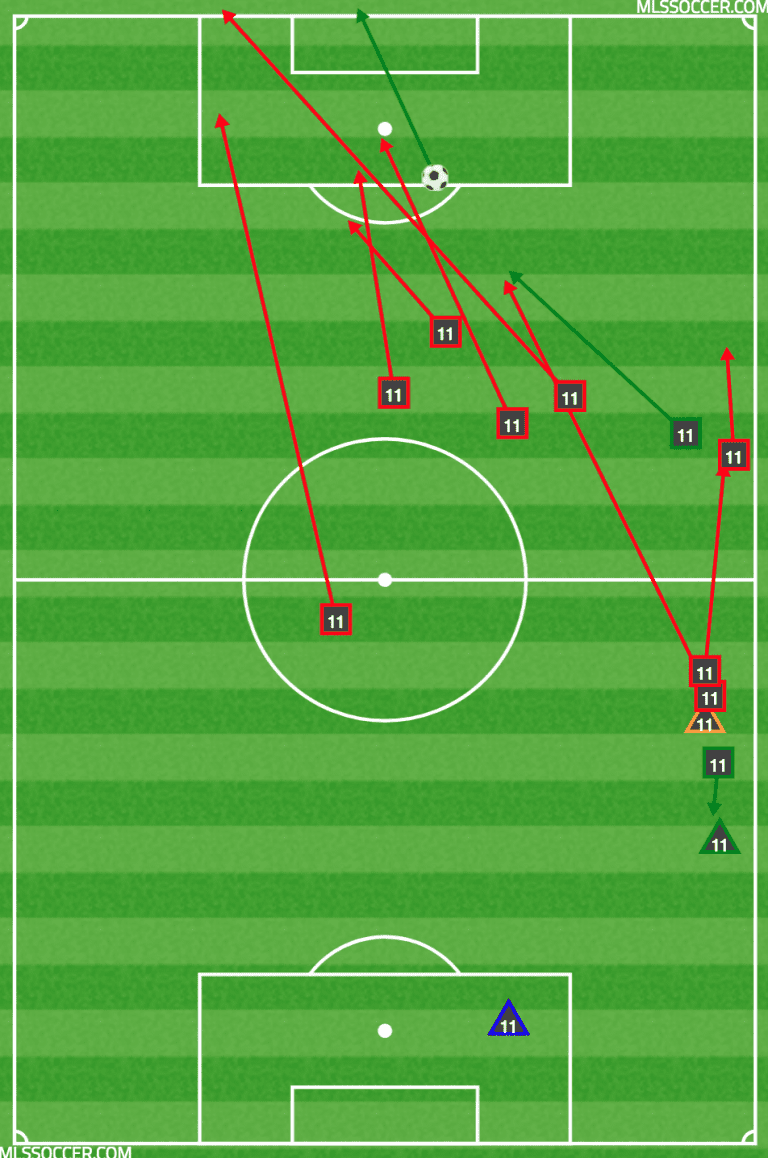
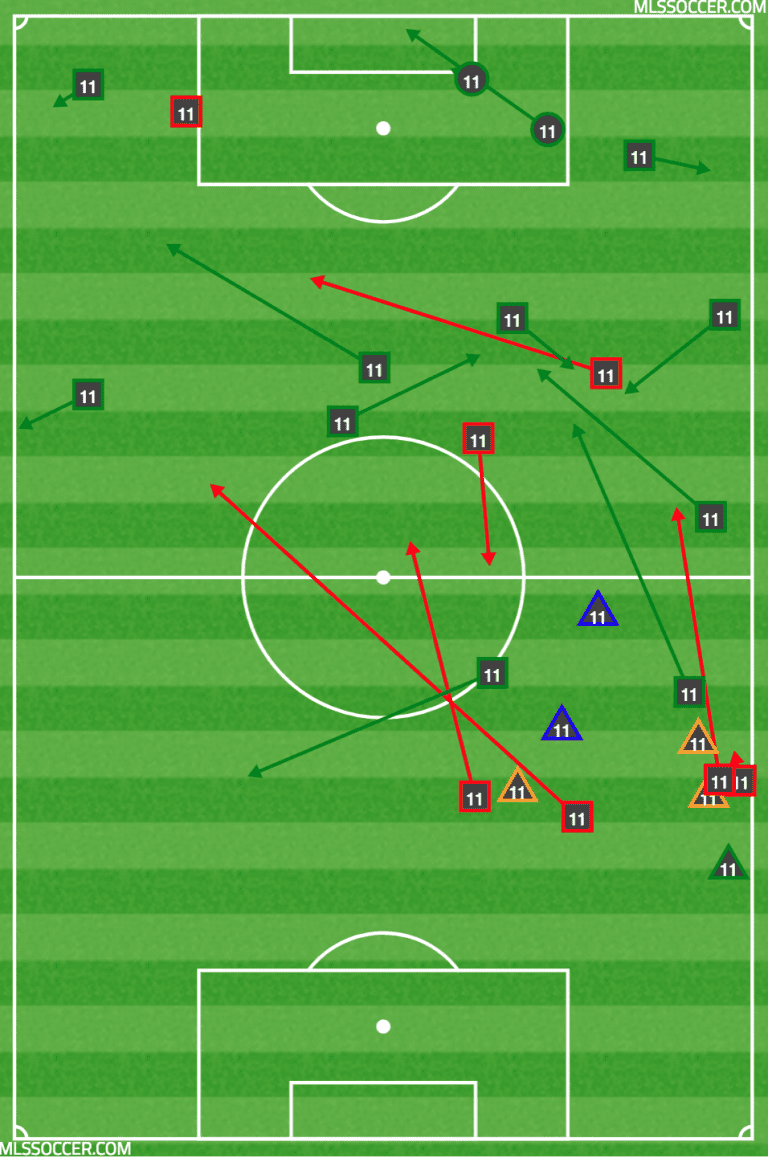
Right: Mosquera first half passes and defensive actions; Left: Mosquera first half passes and defensive actions
Within the game, Mosquera was much more comfortable with Mauro Diaz in the middle for the second half. Isolating each 45, you can see the Colombian was unsuccessful in trying to find the middle during. Once Diaz came on after the break, the two were able to combine in the middle much more effectively than the direct, counterattack mindset played with in the first half. Some of this can be traced back to Dallas trailing and looking for goals rather than staying compact defensively, but the two obviously fed off each other down the stretch.

Diaz Packing in the Middle
For the second straight match, Diaz made an immediate impact off the bench. NYCFC overloaded the middle in the first half giving Jacori Hayes and Victor Ulloa a lot of work. At the break, Oscar Pareja brought on the Magician as not only an offensive spark, but one that could help fill the void in the middle more effectively than Maxi Urruti, who isn’t necessarily built for that two-way role. Offensively you can see the difference he makes in the attack,
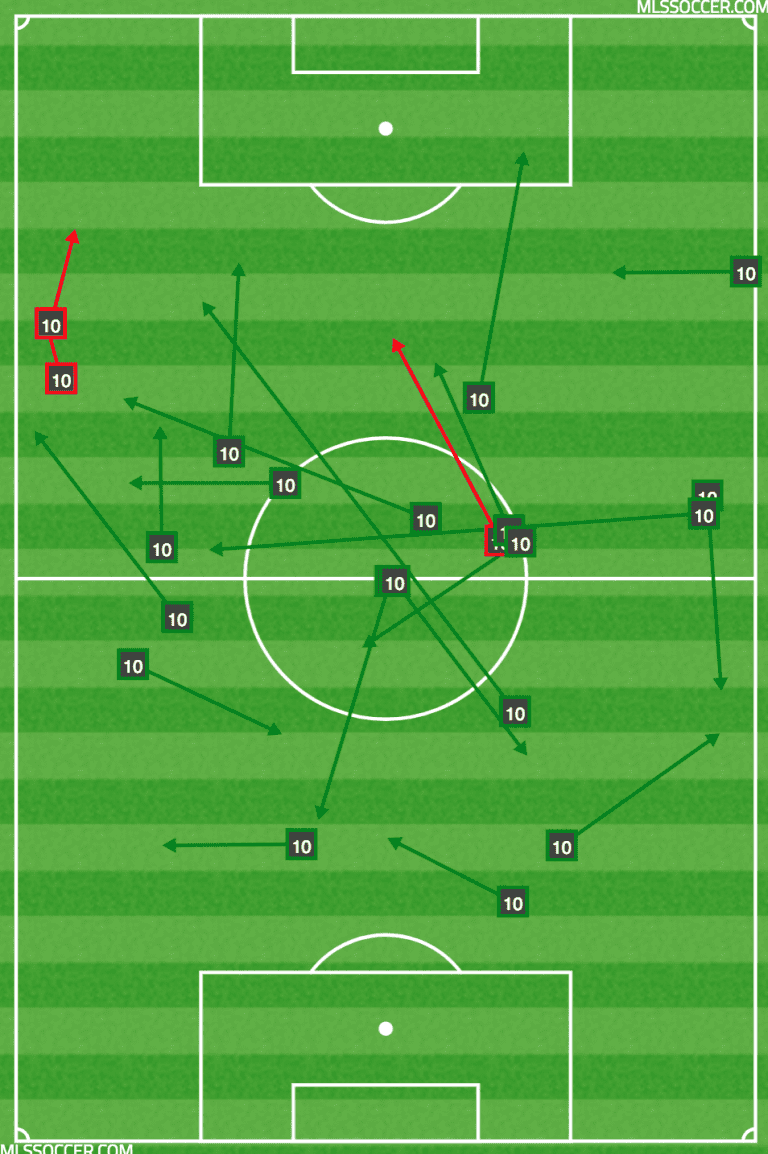
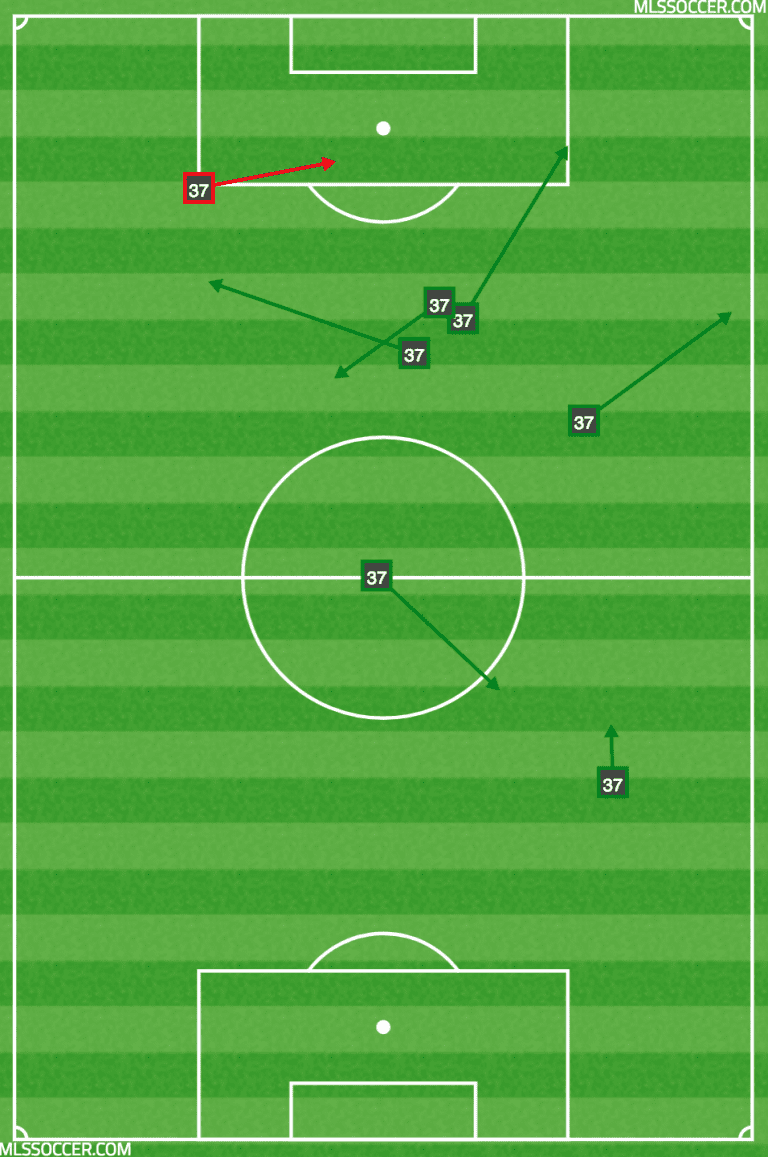
Left: Mauro Diaz successful and unsuccessful passes; Right: Maxi Urruti successful and unsuccessful passes
Like in New England, when Carlos Gruezo was brought in to shore up the middle, Diaz was tasked with a large defensive responsibility in a traditional 4-2-3-1, made easier with less ground to cover on the smaller field. In just 45 minutes of action, Diaz had six tackles and eight recoveries, but also helped offensively more so than Gruezo was asked to do with a lead against the Revs. He completed nearly 87 percent of his passes, created a game-high two chances and won five fouls.
Quick on the Counter
There’s a reason NYCFC is 22-5-11 at Yankee Stadium under Patrick Vieira since the start of 2016. They know how to play on their unusual field.
At 70 yards wide by 110 yards long, the field in the Bronx is some 15 percent smaller than other MLS venues. A good portion of that smaller field is also a sodded over infield of the baseball diamond, making for awkward seams and an uneven playing surface. The usual sight lines that help a player orient himself on the field are off too. Maxi Urruti told one team staffer this week that in 2016 when playing there, he thought he was running straight towards goal based on his peripheral vision in relation to an outfield wall, but instead was running in a steep diagonal because of the unparalleled building. Given the conditions, playing a possession game is difficult for incoming teams unfamiliar with the confines.
Instead, the games at Yankee Stadium are all about counter attacks because a pass in New York gets you much closer on goal than the same pass anywhere else in MLS. It’s also less room for defenses to recover on counters. Three of the four goals on Sunday came off of them. It’s the nature of the game and after three-plus seasons, the home team knows the conditions all to well and uses them to their full extent.
What we saw on Sunday was New York City exploiting the smallest of breaks despite an otherwise controlled game from FCD. That’s what NYCFC has learned to do better than anyone else on their field and it’s why Yankee Stadium is one of the toughest venues in the league to play in.


